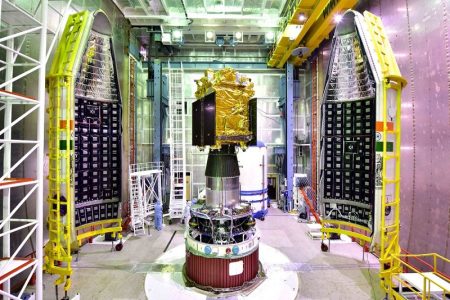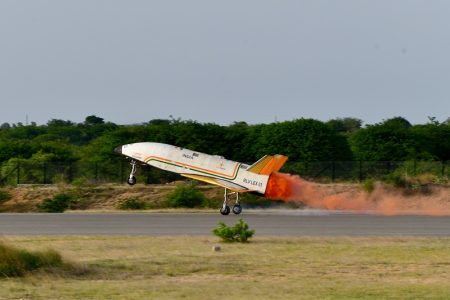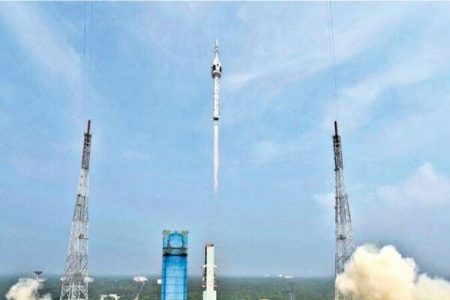
The Indian Space Research Organisation (ISRO) successfully launched the Earth Observation Satellite-8 (EOS-8) from the Satish Dhawan Space Centre in Sriharikota, Andhra Pradesh, on Friday.
ISRO shared on X that the third developmental flight of the SSLV (Small Satellite Launch Vehicle) was a success, with SSLV-D3 precisely placing EOS-08 into orbit. This accomplishment signifies the successful completion of ISRO’s SSLV Development Project. With the technology now being transferred, the Indian industry and NSIL India will produce SSLV for future commercial missions.
According to ISRO, the six-and-a-half-hour countdown for the launch began at 2:47 am. This mission represents the third and final developmental flight of the SSLV-D3/EOS-08 mission, with the spacecraft designed for a mission duration of one year.
The primary goals of the EOS-08 mission include designing and developing a microsatellite, creating payload instruments compatible with the microsatellite bus, and integrating new technologies for future operational satellites, as previously stated by ISRO.
Built on the Microsat/IMS-1 bus, EOS-08 is equipped with three payloads: the Electro-Optical Infrared Payload (EOIR), the Global Navigation Satellite System-Reflectometry Payload (GNSS-R), and the SiC UV Dosimeter.
The EOIR payload is capable of capturing images in the Mid-Wave IR (MIR) and Long-Wave IR (LWIR) bands, both day and night, for various applications including satellite-based surveillance, disaster and environmental monitoring, volcanic activity observation, fire detection, and industrial disaster monitoring. The GNSS-R payload demonstrates the use of GNSS-R-based remote sensing for applications such as ocean surface wind analysis, soil moisture assessment, cryosphere studies over the Himalayas, flood detection, and inland waterbody detection.
The mission operates in a Circular Low Earth Orbit (LEO) at an altitude of 475 km with an inclination of 37.4°, and is expected to have a mission life of one year. The satellite weighs approximately 175.5 kg and generates around 420 W of power. It interfaces with the SSLV-D3/IBL-358 launch vehicle.
EOS-08 represents a significant leap in satellite mainframe systems, featuring an Integrated Avionics system known as the Communication, Baseband, Storage, and Positioning (CBSP) Package. This package integrates multiple functions into a single, efficient unit, and is designed with cold redundant systems using commercial off-the-shelf (COTS) components and evaluation boards, supporting up to 400 GB of data storage. Additionally, the satellite includes a structural panel embedded with PCB, an embedded battery, a Micro-DGA (Dual Gimbal Antenna), an M-PAA (Phased Array Antenna), and a flexible solar panel, all serving as critical components for onboard technology demonstration.













